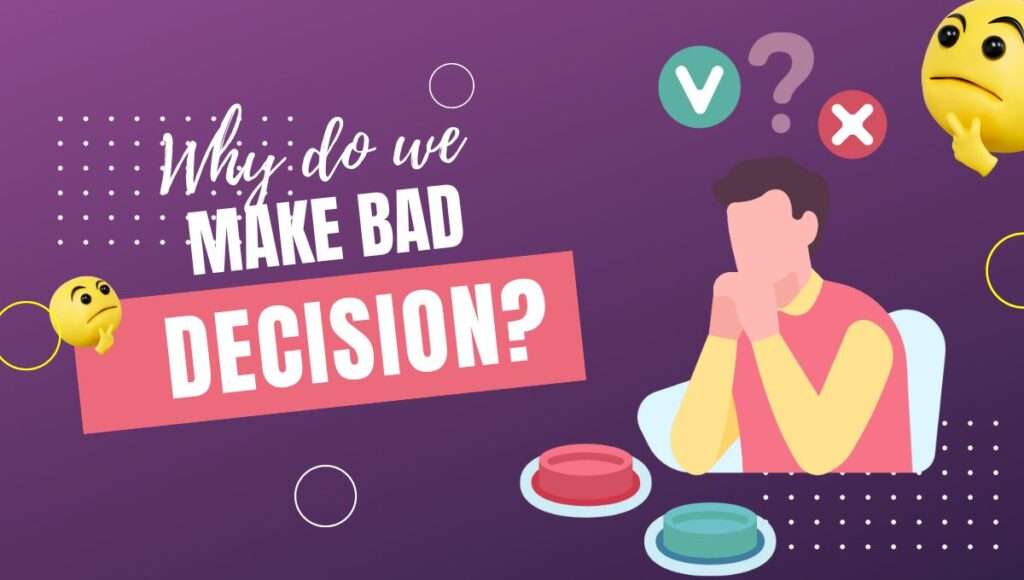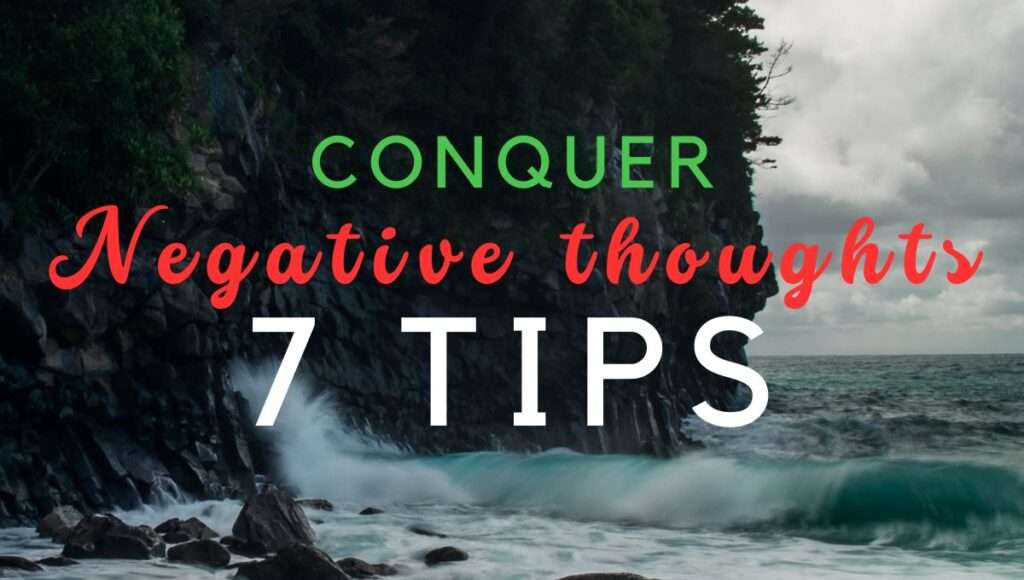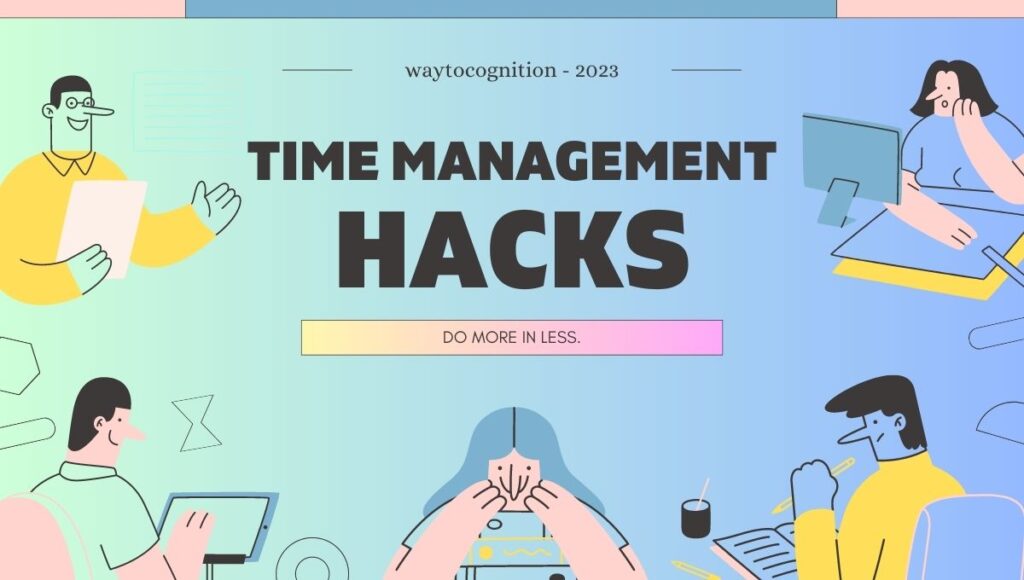The Science of Habits: 4 Ultimate ways to form good habits & avoid bad habits. 🧠
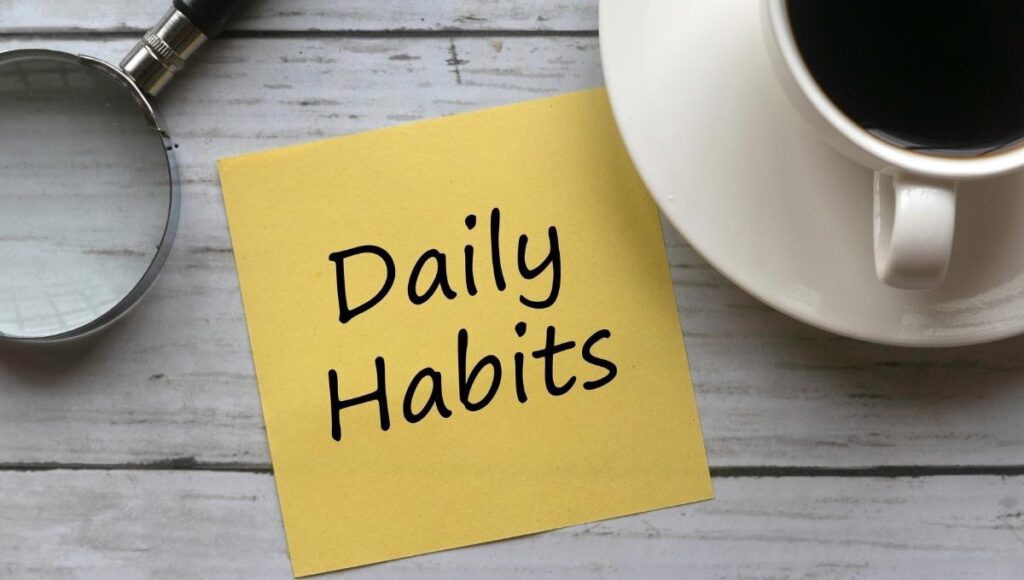
Habits, Have you ever wondered why some people seem to have it all figured out? They wake up early, exercise regularly, eat healthily, work productively, and enjoy their hobbies. They seem to have a natural ability to stick to good habits and achieve their goals.
On the other hand, have you ever felt frustrated by your own lack of discipline? You know what you should do, but you can’t seem to do it. You struggle with bad habits that sabotage your health, happiness, and success. You feel like you have no control over your behaviour.
If you can relate to any of these scenarios, then this blog post is for you. In this post, I will explain the science behind how habits work in our brains, how we can create good habits that support our well-being and growth, and how we can break bad habits that hold us back from reaching our full potential.
By the end of this post, you will have a better understanding of how habits shape your life, and how you can change them for the better. You will also learn some practical tips and strategies that you can apply right away to improve your habits and achieve your goals.
So, let’s get started. But first, let’s define what habits are and why they are important for our lives.
What are Habits and Why are They Important? 🤔
Habits are actions that we perform automatically and repeatedly without much conscious thought or effort. They are the result of learning from our past experiences and adapting to our environment. They help us save time and energy by simplifying our decision-making process and reducing our cognitive load. 🧠
For example, think about how you brush your teeth every morning. You don’t have to think about every step involved in this routine. You just do it without much deliberation or hesitation. You have learned this habit over time and it has become ingrained in your brain. This frees up your mental resources for other tasks that require more attention and creativity. 🎨
Habits are important because they influence our behaviour, thoughts, emotions, and outcomes. They can either help us or hinder us in achieving our goals and living our desired lifestyle. They can either enhance or diminish our health, happiness, and success. They can either empower or limit us in expressing our true potential. 💯
According to a study by researchers at Duke University, habits account for about 40% of our daily actions. That means that almost half of what we do every day is driven by habits, not by conscious choices or intentions. That’s why it’s crucial to understand how it works and how we can change them for the better.
How Habits Work in the Brain 🧠
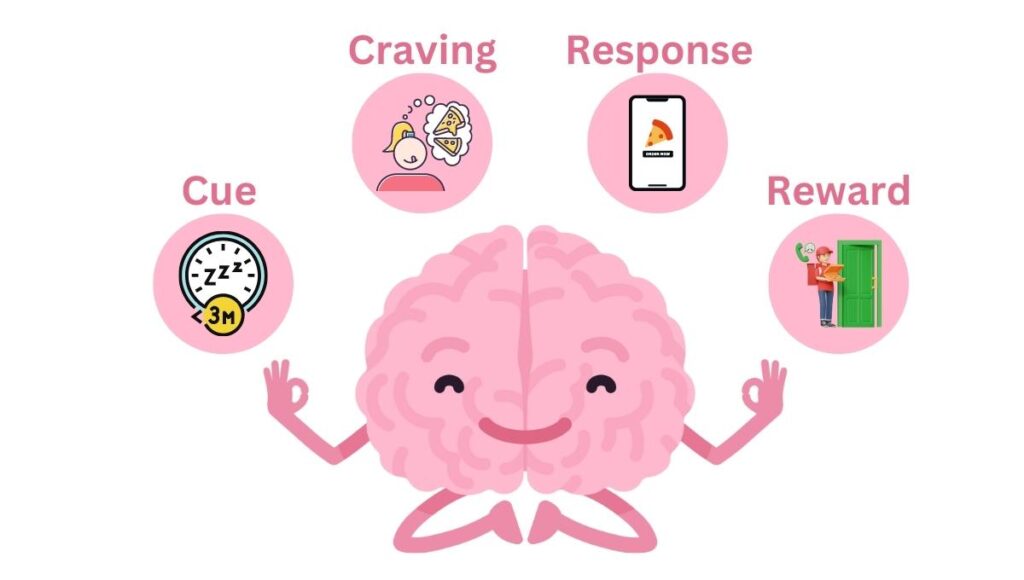
To understand how habits work in the brain, we need to understand the four steps of habit formation: cue, craving, response, and reward. These four steps form a loop that is repeated every time we perform a habit. This loop is also known as the habit loop or the habit cycle. Let’s look at each step in detail.
Cue 🚨
A cue is a stimulus that triggers a habit. It can be anything that catches our attention or reminds us of a reward. It can be internal or external, such as a feeling, a thought, a location, a time, a person, an object, or an event.
For example, when you feel hungry (internal cue), you might see a picture of a pizza (external cue) on your phone. This cue signals that there is a potential reward available: eating pizza.
Craving 🍕
A craving is the motivational force behind a habit. It is the desire or urge to obtain the reward associated with the cue. It is what drives us to perform a response.
For example, when you see the picture of the pizza (cue), you might start salivating and feeling hungry (craving). This craving motivates you to order pizza online (response).
Response 📱
A response is the action that we take to satisfy the craving and obtain the reward. It can be physical or mental, such as moving your body, speaking words, typing text, clicking buttons, or thinking thoughts.
For example, when you feel hungry and see a picture of the pizza (cue and craving), you might open an app on your phone and place an order for pizza delivery (response).
Reward 🎁
A reward is the outcome that we get from performing the response. It can be tangible or intangible, such as food, money, praise, pleasure, relief, or satisfaction.
For example, when you order pizza online (response), you might receive a confirmation message and a tracking number (reward). This reward gives you a sense of anticipation and excitement for the pizza delivery.
The reward also reinforces the habit loop by teaching the brain that the response is worth repeating in the future. It activates the pleasure centres of the brain and releases dopamine, a neurotransmitter that is involved in learning, motivation, and memory. This creates a positive feedback loop that strengthens the neural connections between the cue, the craving, the response, and the reward. 🧠
The more we repeat this loop, the more habitual it becomes. The cue becomes more salient, the craving becomes more intense, the response becomes more automatic, and the reward becomes more expected. Eventually, we form a habit that is hard to break.
This is how habits work in the brain. They are stored in a brain region called the basal ganglia, which is responsible for automating actions and behaviors. The basal ganglia allow us to perform habits without much conscious awareness or effort, which can be useful for some situations, but not for others.
How to Create Good Habits 🙌
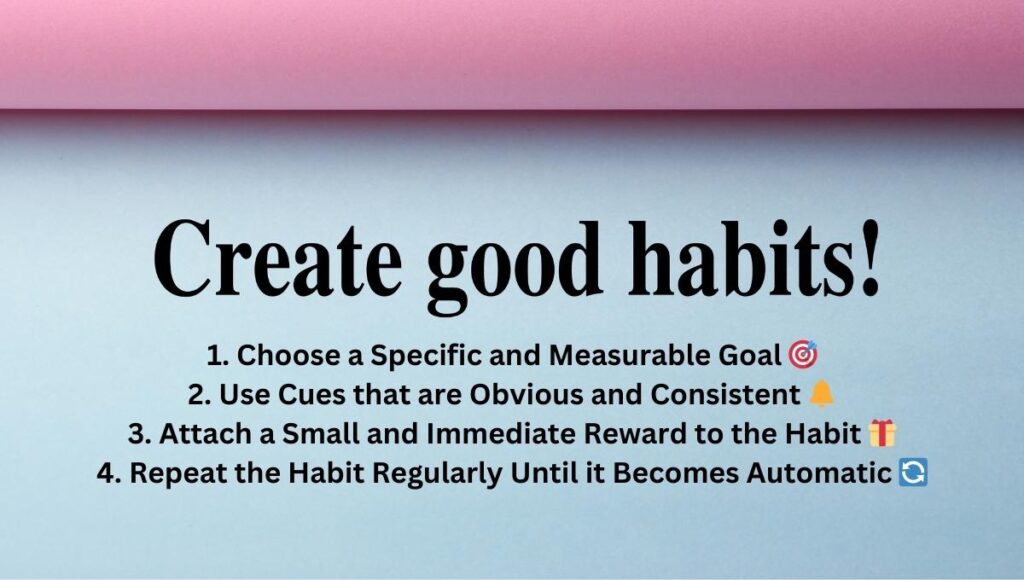
Now that we know how habits work in the brain, how can we create good habits that support our well-being and growth? How can we use the habit loop to our advantage and build habits that align with our goals and values?
Here are some strategies that you can use to create good habits:
Choose a Specific and Measurable Goal 🎯
The first step to creating good habits is to choose a specific and measurable goal that you want to achieve. A goal is a desired outcome that you want to accomplish in the future. It gives you a direction and a purpose for your actions.
For example, instead of saying “I want to be fit”, say “I want to run for 30 minutes every day”. This goal is specific because it tells you exactly what you want to do and how much you want to do it. It is also measurable because you can track your progress and see if you are getting closer to your goal.
A specific and measurable goal helps you create good habits because it clarifies your intention and motivates you to take action. It also helps you measure your results and evaluate your performance. It gives you feedback on what works and what doesn’t work for you.
Use Cues that are Obvious and Consistent 🔔
The second step to creating good habits is to use cues that are obvious and consistent. Obvious cues are cues that are easy to notice and hard to ignore. Consistent cues are cues that occur regularly and reliably in your environment.
For example, if you want to run for 30 minutes every day (goal), you can use cues such as putting your running shoes near the door (obvious cue) or setting an alarm for 6 a.m. (consistent cue). These cues will remind you of your goal and prompt you to take action.
Obvious and consistent cues help you create good habits because they reduce friction and increase the likelihood of performing the response. They also help you overcome procrastination and distraction by focusing your attention on the task at hand.
Attach a Small and Immediate Reward to the Habit 🎁
The third step to creating good habits is to attach a small and immediate reward to the habit. A reward is the outcome that you get from performing the response. It can be anything that gives you pleasure, satisfaction, or relief.
A small reward is a reward that is proportional to the effort required for the response. An immediate reward is a reward that occurs shortly after performing the response.
For example, if you run for 30 minutes every day (response), you can attach rewards such as watching TV or listening to music while running (small reward) taking a shower, or having breakfast after running (immediate reward). These rewards will make you feel good and reinforce your habit.
Small and immediate rewards help you create good habits because they provide positive feedback and increase your motivation. They also help you overcome resistance and boredom by making the response more enjoyable and rewarding.
Repeat the Habit Regularly Until it Becomes Automatic 🔄
The fourth step to creating good habits is to repeat the habit regularly until it becomes automatic. Regular repetition is repetition that occurs frequently and consistently over time. Automaticity is the state of performing an action without requiring much attention or willpower.
For example, if you run for 30 minutes every day (habit), you need to repeat this habit regularly until it becomes automatic. You can use a calendar or a tracker app to mark your progress and keep yourself accountable. You can also join a running club or find a running buddy to make it more fun and social. 🏃♂️
Regular repetition and automaticity help you create good habits because they make the habit loop more stable and efficient. They also help you overcome inertia and laziness by making the habit a part of your identity and routine.
These are some of the strategies that you can use to create good habits. By choosing a specific and measurable goal, using cues that are obvious and consistent, attaching a small and immediate reward to the habit, and repeating the habit regularly until it becomes automatic, you can build habits that support your well-being and growth. 🙌
How to Break Bad Habits 😱
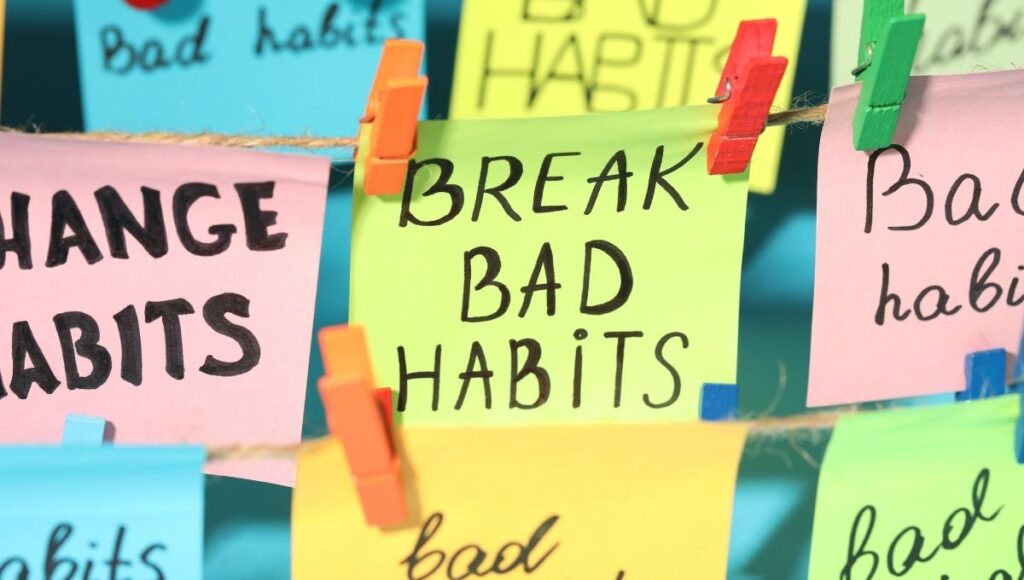
Now that we know how to create good habits, how can we break bad habits that interfere with our well-being and happiness? How can we use the habit loop to our advantage and break habits that conflict with our goals and values?
Here are some strategies that you can use to break bad habits:
Identify the Cue, Craving, Response, and Reward of the Bad Habit 🔎
The first step to breaking bad habits is to identify the cue, craving, response, and reward of the bad habit. As we learned before, these are the four steps of the habit loop that drive our behavior.
You need to understand what triggers the habit, what motivates it, what actions you take for it, and what outcomes you get from it.
For example, if you smoke after a stressful day at work (bad habit), you need to identify the cue (stress), the craving (relaxation), the response (smoking), and the reward (nicotine). This will help you understand why you smoke and how it affects your brain and body.
Identifying the cue, craving, response, and reward of the bad habit helps you break bad habits because it gives you insight into your behavior and its consequences. It also helps you find ways to intervene and disrupt the habit loop.
Replace the Bad Habit with a Better One that Satisfies the Same Craving 💯
The second step to breaking bad habits is to replace the bad habit with a better one that satisfies the same craving. A craving is the motivational force behind a habit. It is what drives us to perform a response.
You need to find an alternative action that gives you a similar or superior reward without causing harm or guilt.
For example, if you smoke after a stressful day at work (bad habit), you can replace it with a better one that satisfies your craving for relaxation, such as chewing gum or meditating (better habit). These actions will give you a sense of calmness and relief without damaging your health or wallet.
Replacing the bad habit with a better one that satisfies the same craving helps you break bad habits because it provides a positive solution and reduces your dependence on the bad habit. It also helps you create new neural pathways in your brain that override the old ones.
Avoid or Modify the Cues that Trigger the Bad Habit 🚫
The third step to breaking bad habits is to avoid or modify the cues that trigger the bad habit. A cue is a stimulus that triggers a habit. It can be anything that catches our attention or reminds us of a reward. You need to either remove the cue from your environment or change its meaning or association.
For example, if you smoke after a stressful day at work (bad habit), you can avoid or modify the cues that trigger this habit, such as keeping cigarettes out of sight or changing your work environment (avoiding cues), or associating cigarettes with negative consequences or alternative actions (modifying cues). These changes will reduce your exposure and temptation to smoke.
Avoiding or modifying the cues that trigger the bad habit helps you break bad habits because it reduces the frequency and intensity of the habit loop. It also helps you create new associations and habits that are more compatible with your goals and values.
Reduce or Eliminate the Reward of the Bad Habit 🙅♂️
The fourth step to breaking bad habits is to reduce or eliminate the reward of the bad habit. A reward is the outcome that you get from performing the response. It can be anything that gives you pleasure, satisfaction, or relief.
You need to either decrease the value or availability of the reward or increase its cost or difficulty.
For example, if you smoke after a stressful day at work (bad habit), you can reduce or eliminate the reward of this habit, such as increasing the price of cigarettes or making them less accessible (reducing reward) or using nicotine patches or gum to ease withdrawal symptoms (eliminating reward). These changes will make smoking less appealing and rewarding.
Reducing or eliminating the reward of the bad habit helps you break bad habits because it weakens the positive feedback loop and decreases your motivation. It also helps you overcome addiction and dependence by reducing your craving and tolerance for bad habit.
These are some of the strategies that you can use to break bad habits. By identifying the cue, craving, response, and reward of the bad habit, replacing the bad habit with a better one that satisfies the same craving, avoiding or modifying the cues that trigger the bad habit, and reducing or eliminating the reward of the bad habit, you can break habits that interfere with your well-being and happiness. 😱
Conclusion 🎉
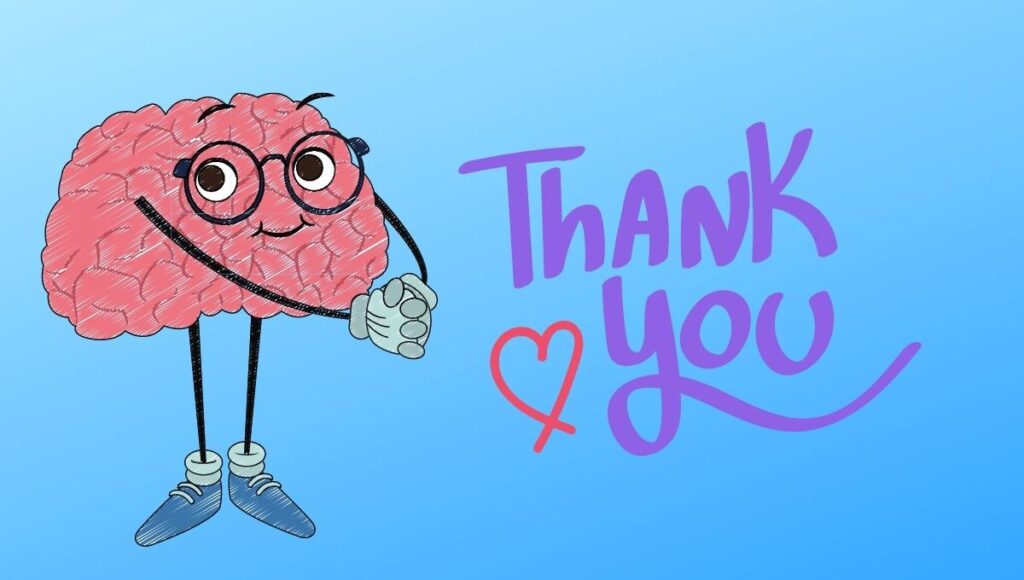
In this blog post, we have learned about the science of habits: how they form and how to change them. We have learned how habits work in the brain, how to create good habits, and how to break bad habits.
We have also learned some practical tips and strategies that we can apply right away to improve our habits and achieve our goals. By understanding and changing our habits, we can transform our lives for the better.
I hope you enjoyed reading this blog post and found it useful and inspiring. If you did, please share it with your friends and family who might benefit from it as well. Also, feel free to leave a comment below and let me know what you think about this topic and what habits you want to create or break. I would love to hear from you.
Thank you for your attention and interest. I appreciate it very much. Please subscribe to my blog for more content on similar topics. I will see you in the next post. Until then, stay healthy, happy, and successful.
